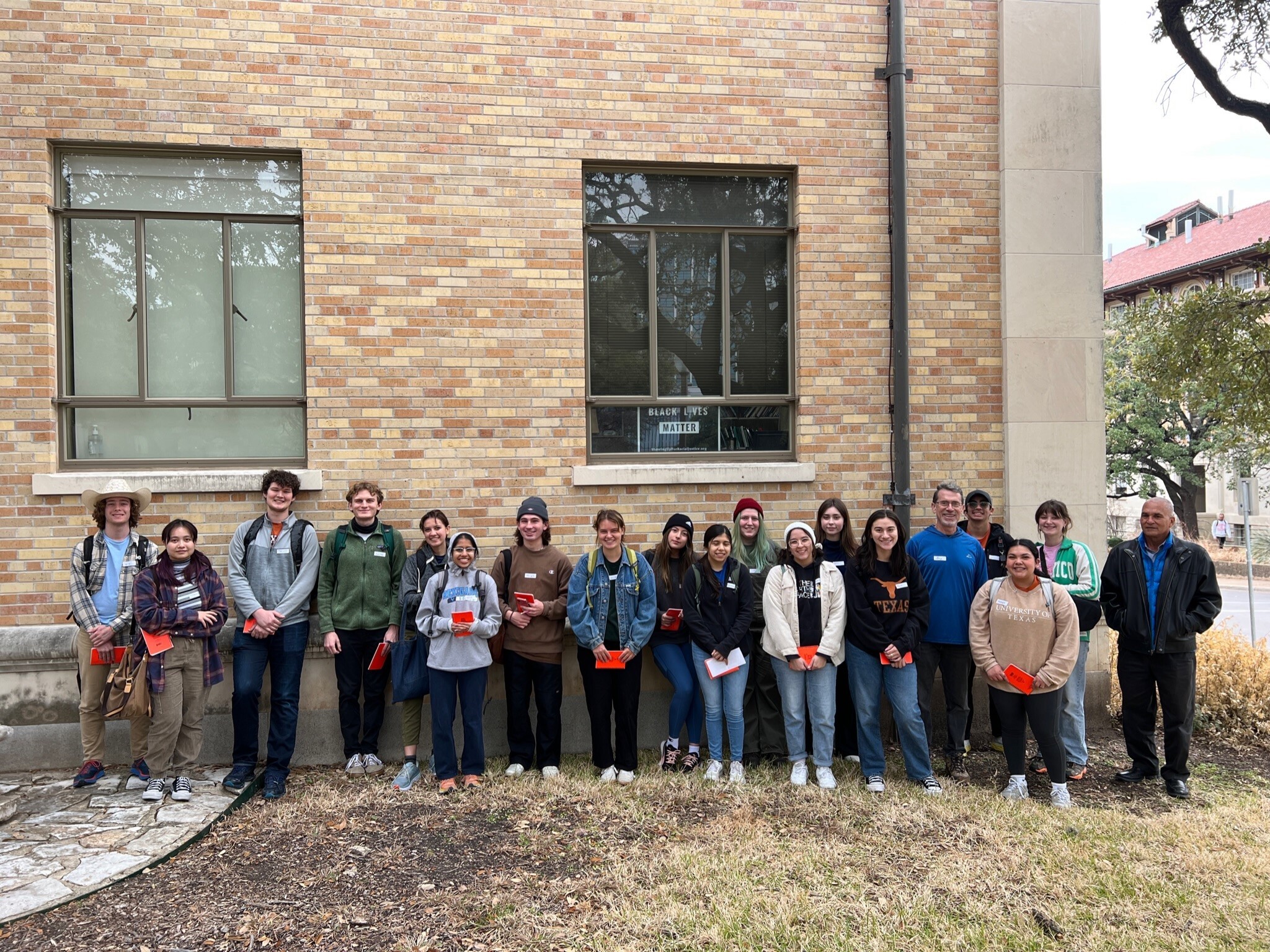A student’s perspective on GEO371T: The Science of Environmental Justice

The Science of Environmental Justice
Environmental Justice (EJ) is the fair treatment and involvement of all people regardless of race, color, national origin, or income, in the development of environmental policies and regulations. Central to advancing EJ is understanding the physical, chemical, biological, and other environmental processes that lead to the inequitable impacts of environmental degradation. This course explores the scientific basis for understanding these inequitable impacts through lectures and case studies, including field-based investigations focused on water quality in Austin-area communities.
For the EJ course, students worked on a Watershed Team Project. The purpose of this project was to identify challenges to a community’s water resilience and hypothesize the extent to which these challenges are a function of disproportionate impacts on historically underserved communities. There were six teams of students; each team comprises students from complementary disciplines and with different experiences. Teams were assigned a watershed in the Austin area and developed a research report that included 1) the watershed’s water quality (WQ) and social and infrastructure conditions, proposed, 2) new data that would be significant to collect for further research, and 3) a proposal for community-based participatory research. The report incorporated spatial analysis (e.g., Google Earth, GIS, EJScreen, etc.) and the proposal component identified a diverse team of university researchers, community members, and associated stakeholders for the participatory research project. As part of the Watershed Team Project, students collected water samples from their assigned watersheds that were subsequently analyzed for several water quality parameters including geochemical data (cations and anions) and bacterial data (fecal coliform, e. coli. counts, and microbial source tracking).
Projected unprecedented growth in population, increasing urbanization, changes in land use and demographics, and climate change in Austin, Texas are synergistically putting a strain on water resource quality within Austin watersheds. (Beal et al., 2010, Manlove et. al. 2020) With increasing demand, yet decreasing quality, it is imperative to study and quantify the social and environmental costs of water quality degradation, establish approaches to assess contaminants to prioritize and which communities are most vulnerable, and develop ways of minimizing the impacts.








